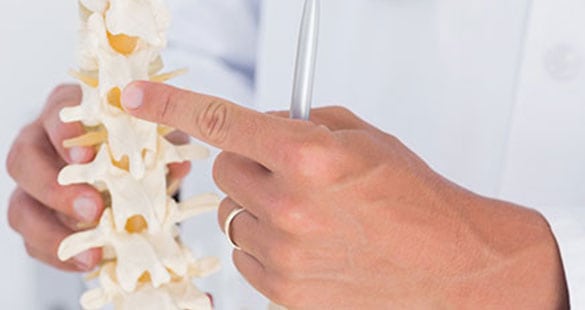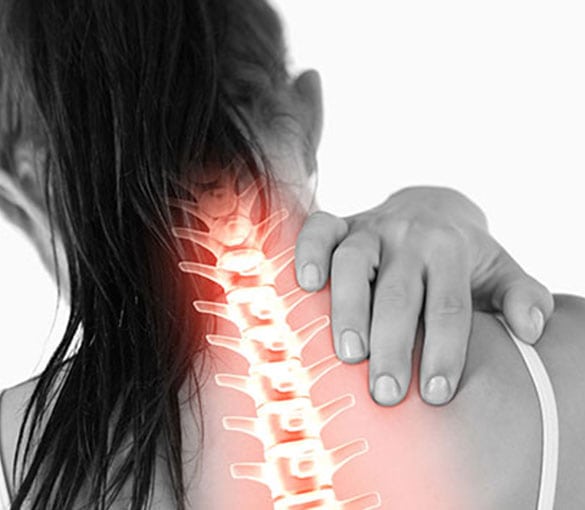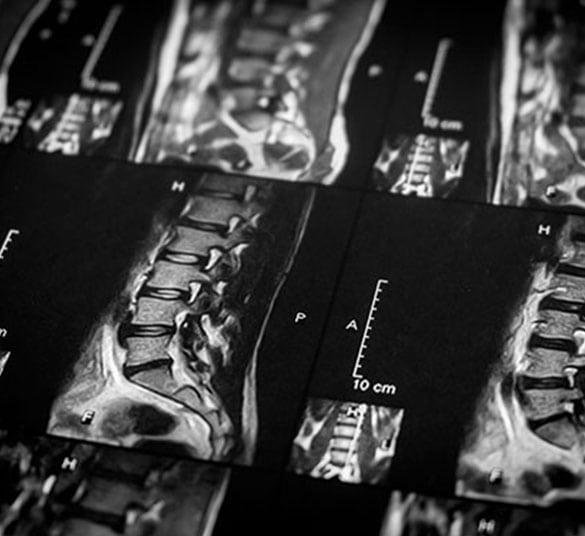
Recover faster with Outpatient laser spine surgery.
Sometimes referred to as same-day surgery, outpatient laser spine surgery is often performed with techniques involving smaller incisions that are less invasive, which ultimately leads to fewer risks than what’s normally associated with traditional open surgery.
Orange County Pain Clinics allows patients to take full advantage of state-of-the-art outpatient laser spine surgery, so that you can return quickly to your normal activities.


If you are considering surgical relief of back, neck, or spine-related nerve pain, here are some of the common conditions often treated with outpatient laser spine surgery using minimally invasive techniques.
Disc Herniation
The discs that cushion the spine sometimes before damaged enough to cause inner disc material to push through a disc’s harder exterior shell. When this happen, the herniated disc may place pressure on adjacent nerve roots. This pressure can lead to radiating nerve pain (radiculopathy) that’s often felt in shoulders, arms, or legs, depending on where the nerve is compressed. Disc herniation occurs most often within the lumbar (lower) back, although the middle and upper portions of the spine may also be affected by disc damage.
A possible solution for nerve pain related to disc herniation is minimally invasive decompression surgery. Lasers may be used to target nerve endings directly to block pain signals. If a discectomy is necessary, the part of the herniated disc that’s pressing on nearby nerve roots will be removed. The procedure is performed in a way that maintains stability of the spine.
Spinal Stenosis and Other Sources of Nerve Compression
Nerves may also become compressed in patients with spinal stenosis, an abnormal narrowing of the spinal canal that often occurs in the lower back or neck. Additional space may be created within the spinal canal with a laminotomy. This minimally invasive procedure involves the removal of part of the vertebral arch, a small bone called the lamina.
In some instances, the lamina will directly compress the nerves in the spinal cord, resulting in both local (pain felt near the affected area of the spine) and radiating pain. Nerves can also become compressed because of bone spurs and changes in the spine due to progressive conditions such as arthritis. A minimally invasive laminotomy procedure may relieve the following symptoms:
- General weakness in extremities
- Tingling sensations or numbness
- Back or neck pain
- Difficulty with balance and stability
- Pain that develops when standing or walking for too long

Sciatica
Sciatica is a more specific form of nerve compression that affects the sciatic nerve. The longest single nerve in the human body, the sciatic nerve runs from the lower back downward through the legs before branching off into a series of nerves that go further down. Sciatica is often caused by pressure stemming from a damaged disc in the lower back. Conditions such as chronic high blood pressure and diabetes may also contribute to the inflammation that sometimes irritates the sciatic nerve.
Treatment of sciatica with minimally invasive laser spine surgery may involve a laminotomy to create more space for the sciatic nerve, a discetomy to remove part of the damaged disc that’s pressing this nerve, or a foraminotomy. With a foraminotomy, the passageway where a spinal root exits the spinal canal is enlarged. Outpatient surgery may relieve sciatica symptoms such as:
- Numbness or pain in the buttocks or thighs
- Burning sensations in legs and feet
- Weakness in legs that may include difficulty with mobility
Degenerative Disc Disease
Often affecting adults over the age of fifty, degenerative disc disease (DDD) is a term used to describe the gradual deterioration of spinal discs. It’s often caused by age-related changes to the spine. Contributing factors may also include arthritis, a loss of bone mass, genetics, and changes with lifestyle habits over the years. DDD often affects areas where there is the most spinal movement, the lower back and neck.
If lifestyle modifications (e.g., getting more exercise, making healthy diet choices) and various non-surgical treatments aren’t providing relief, laser spine techniques recommended may include partial or complete disc removal. If a worn or damaged disc has to be completely removed, a less-invasive, outpatient lateral lumbar Interbody fusion (LLIF) may be done. A spacer is inserted to maintain spine height.
As with any type of spine surgery, outpatient laser spine surgery is typically recommended if conservative (non-surgical) treatment options have failed to relieve symptoms or significantly reduce pain. While there are certain conditions such as high-level scoliosis and spine pain linked to hard-to-reach tumors where open surgery is the better option, there’s a growing list of procedures that can be performed safely with less-invasive laser spine surgery.

